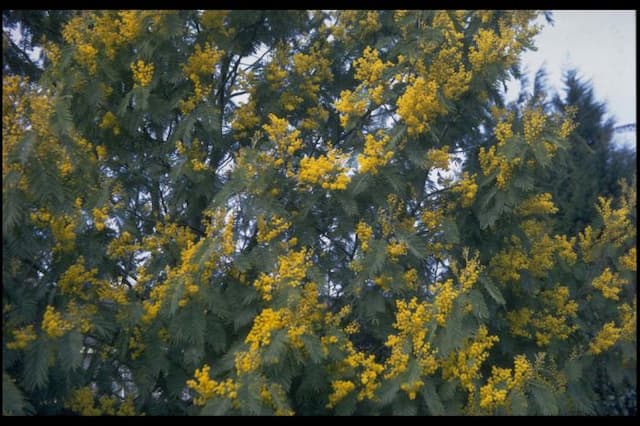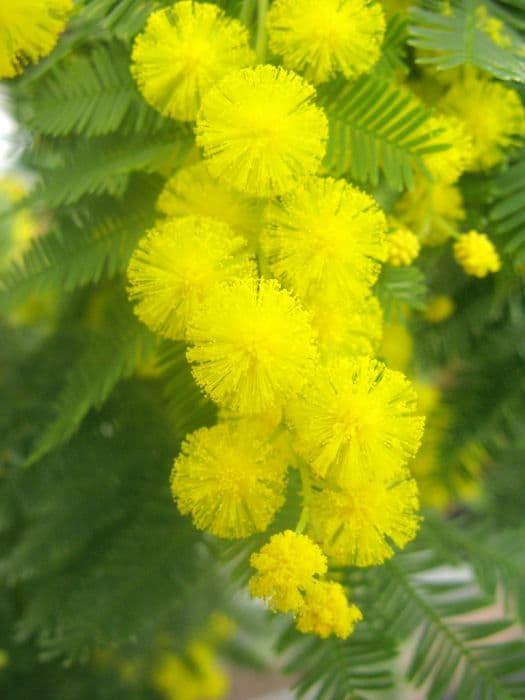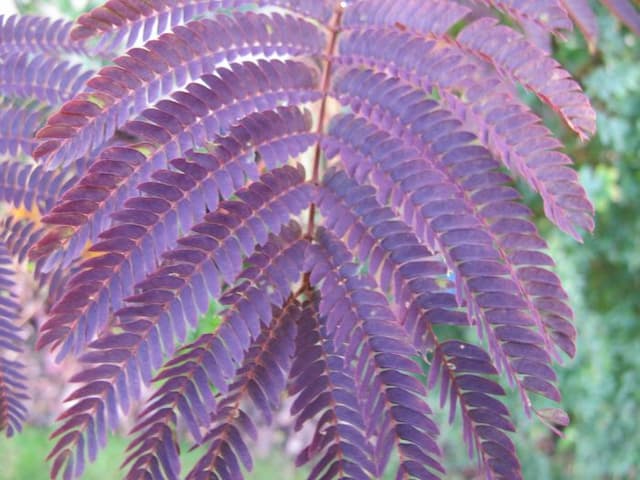Sweet pea 'Happy Birthday' Lathyrus odoratus 'Happy Birthday'

ABOUT
a vigorous, hardy variety with a medium scent producing large, double flowers in an unusual shade of cerise from June until September. An excellent variety for exhibiting
About this plant
 Names
NamesFamily
Fabaceae.
Synonyms
Sweet Pea, Everlasting Pea, Perennial Pea, Sweetpea.
Common names
Lathyrus odoratus
 Characteristics
CharacteristicsLife cycle
Annuals
Foliage type
Deciduous
Color of leaves
Green
Flower color
Varies
Height
6 feet (1.8 meters)
Spread
1 foot (0.3 meters)
Plant type
Climber
Hardiness zones
2-11
Native area
Mediterranean
Benefits
 General Benefits
General Benefits- Aesthetic Appeal: Sweet peas offer a range of vibrant colors and have a delicate, attractive appearance that can enhance the visual appeal of gardens and landscapes.
- Fragrance: Sweet peas are known for their sweet, pleasant fragrance which can add a sensory dimension to outdoor spaces or cut flower arrangements indoors.
- Pollinator Attraction: Sweet peas can attract beneficial insects such as bees and butterflies to the garden, aiding in the pollination of plants.
- Climbing Habit: With their climbing nature, sweet peas are ideal for vertical gardening, and can be used to cover trellises, fences, and other structures, optimizing space in the garden.
- Ease of Growth: Sweet peas are relatively easy to grow and can be suitable for gardeners of all skill levels.
- Cut Flowers: Their long stems make sweet peas perfect for cutting and using in bouquets and floral arrangements.
- Seasonal Interest: Sweet peas are generally cool-season flowers that add interest to the garden during spring and early summer when many other plants may not be in bloom.
- Color Variety: Available in many colors, sweet peas can be used to create a diverse and colorful garden palette.
- Seed Pod Interest: After flowering, sweet peas produce interesting seed pods that can also add visual interest to the garden.
- Edibility: While not all sweet peas are edible and some parts can be toxic if ingested, certain varieties do have edible flowers that can be used to garnish dishes.
 Medical Properties
Medical PropertiesThis plant is not used for medical purposes.
 Air-purifying Qualities
Air-purifying QualitiesThis plant is not specifically known for air purifying qualities.
 Other Uses
Other Uses- Sweet pea petals can be used as a natural dye to color textiles or artwork, with different parts of the plant producing various shades of yellow, green or brown.
- The stems of the sweet pea can be woven into a rustic support structure for other climbing plants in a garden.
- The flowers can be infused in water to create a floral-scented room spray or a refreshing face mist.
- Pressed or dried sweet pea flowers can be used in crafting, such as making bookmarks or in scrapbooking for decorative purposes.
- Sweet pea seeds, when dried, can be used in rattles or as a filling for percussive musical instruments for their sound qualities.
- When in bloom, sweet pea plants can be used as an educational tool to demonstrate plant growth and pollination to students or gardening enthusiasts.
- The tendrils of the sweet pea plant can be used in floral arrangements to add an element of whimsy and natural structure.
- During off-seasons, the dried hollowed stems of the sweet pea can be used for small-scale crafts, such as making beads.
- Photographers often use sweet pea flowers as a soft and natural backdrop for close-up photography of insects and other small animals.
- When creating natural art installations, the sweet pea plant can be used to create a living wall or garden space.
Interesting Facts
 Feng Shui
Feng ShuiThe Sweet Pea is not used in Feng Shui practice.
 Zodiac Sign Compitability
Zodiac Sign CompitabilityThe Sweet Pea is not used in astrology practice.
 Plant Symbolism
Plant Symbolism- Delicate Pleasure: The 'Happy Birthday' variety of Sweet Pea, with its pleasant fragrance and soft petals, symbolizes the delicate pleasures and joys that bring happiness to our daily lives.
- Goodbye: Giving Sweet Peas often means saying goodbye, as they have historically been associated with farewells and the wish for a blissful departure.
- Blissful Pleasure: Sweet Peas embody blissful pleasure, representing moments of pure happiness and contentment.
- Thank You: The Sweet Pea is a way to express gratitude, making it a popular choice for 'Happy Birthday' bouquets as a means of giving thanks for the joy someone brings into your life.
- Friendship: Their bright, inviting appearance makes them a symbol of cherished friendships, suggesting a connection filled with kind sentiments.
 Water
WaterSweet Pea 'Happy Birthday' should be watered deeply once a week, ensuring that the soil is thoroughly moistened. During hot spells or periods of drought, you may need to water it more frequently to maintain moisture levels, possibly two to three times a week. Aim to provide between 0.5 to 1 gallon of water for each watering session depending on the size of the plant and the weather conditions. It is important to water at the base and not over the foliage to prevent disease. Make sure that the plant has well-draining soil to avoid waterlogging which can lead to root rot.
 Light
LightSweet Pea 'Happy Birthday' thrives in full sun, which means it should receive at least 6 to 8 hours of direct sunlight each day. The best spot for your Sweet Pea would be in a sunny border or against a south-facing wall where it can enjoy the sun's rays. Though it can tolerate some light shading, the blooms will be more abundant and vibrant when the plant gets enough sun.
 Temperature
TemperatureSweet Peas, including the 'Happy Birthday' variety, prefer cooler temperatures and do best when daytime temperatures are between 55°F and 70°F. They can survive short periods outside this range but will not thrive if temperatures regularly exceed 80°F or drop below 50°F. To prolong flowering, try to provide these plants with a location that offers partial shade during the hottest part of the day to protect them from extreme summer heat.
 Pruning
PruningPruning your Sweet Pea 'Happy Birthday' involves deadheading spent flowers regularly to encourage further blooming and to maintain the plant's appearance. Prune in the early morning or evening when the temperatures are cooler. Once the flowering begins to wane, usually in late summer, you can cut back the foliage more significantly to tidy up the plant. Pruning is also a good time to check for and remove any diseased or damaged growth to keep the plant healthy.
 Cleaning
CleaningAs needed
 Soil
SoilSweet Pea 'Happy Birthday' thrives in rich, well-draining soil with a neutral to slightly alkaline pH between 6.5 and 7.5. A good soil mix can be made by combining garden soil, compost, and perlite or vermiculite to improve drainage. Feeding with a balanced, slow-release fertilizer will support healthy growth and flowering.
 Repotting
RepottingSweet Peas generally do not require frequent repotting as they are annual plants. They are typically sown directly into the garden or outdoor containers where they will grow for the season. If started indoors, transplant them outside after the danger of frost has passed.
 Humidity & Misting
Humidity & MistingSweet Pea 'Happy Birthday' is not particularly humidity-sensitive and can adapt to a wide range of humidity levels. Normal outdoor humidity is suitable, and no special humidity adjustments are necessary for this plant when grown outdoors.
 Suitable locations
Suitable locationsIndoor
Ensure bright light, cool temps, and amble air flow for indoors.
Outdoor
Full sun, cool roots, and train on support for outdoor growth.
Hardiness zone
2-11 USDA
 Life cycle
Life cycleSweet pea 'Happy Birthday' begins its life as a hard-coated seed, often requiring scarification to encourage germination. After planting in fertile, well-draining soil, the seed germinates, usually within 10 to 21 days, and develops into a seedling with a pair of true leaves. As it grows, the plant becomes a bushy vine, typically requiring support, and starts developing compound leaves with tendrils that grasp onto structures or other plants for support. The sweet pea enters a rapid vegetative growth stage, where it produces long stems and abundant foliage. Following this, it enters the flowering stage, where colorful, fragrant blossoms appear, which are the primary ornamental feature of the plant. After pollination, flowers develop into seed pods, and once mature, the plant completes its cycle by releasing seeds for the next generation.
 Propogation
PropogationPropogation time
Spring
Lathyrus odoratus, commonly known as Sweet Pea 'Happy Birthday', is typically propagated by seed. The best time to sow Sweet Pea seeds is in late fall for mild winter regions or in early spring as soon as the soil can be worked. Early sowing is beneficial as it allows a longer period for the root system to establish, resulting in robust plant growth. To propagate by seed, first prepare a well-draining soil mix. Soak the seeds in water for 24 hours to soften the hard outer coating, which encourages germination. Sow the seeds about 1 inch deep and space them about 2 to 3 inches apart. Keep the soil moist but not soggy, and seedlings should emerge in 10 to 21 days, depending on the soil temperature. Transplant the seedlings to their final position once the danger of frost has passed, taking care not to disturb the roots too much.









